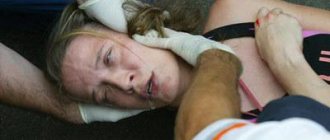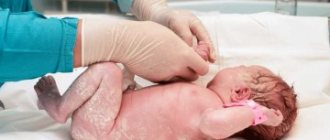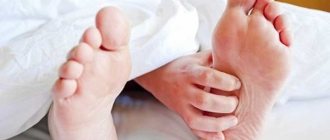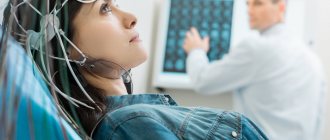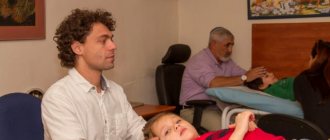Varieties
There are two types of muscle spasms:
- tonic, which are accompanied by prolonged muscle tension;
- clonic, which is characterized by jerky muscle tension, alternating with relaxation.
- idiopathic leg cramps that occur without any reason;
- secondary leg cramps caused by certain diseases or disorders.
The occurrence of idiopathic seizures can be caused by a number of factors:
- excessive load on the leg muscles;
- abnormal activity of nerve endings;
- sudden disruption of blood flow to tissues;
- age-related shortening of tendons, which are tissue fibers connecting muscle tissue to skeletal bones, is a period of aging.
Secondary leg cramps appear against the background of the following circumstances:
- rest time after intense physical exercise;
- the second and third trimester of pregnancy, since during this period there is an increase in body weight, which leads to additional stress on the leg muscles;
- neurological diseases that control leg muscles and affect nerves;
- certain bacterial infections;
- liver diseases, as well as poisoning with toxic substances, which contribute to the penetration of large amounts of toxins into the blood;
- lack of fluid in the body.
There are also several options for leg cramps:
- night leg cramps;
- toe cramps;
- cramps of the calf muscle.
Symptoms of cramps in the calves
The clinical picture of seizures includes a list of symptoms that appear at a certain time. Some talk about an impending attack, others talk about its completion.
Cramps in the calves are manifested by the following symptoms:
- The period of precursors - the patient feels unwell, a feeling of heaviness and discomfort in the legs. The calves may “pulse” or “burn” slightly, sometimes the leg aches and hurts for several days,
- The spasm itself is a strong tension, the muscle becomes hard, contraction of the calf leads to flexion of the foot,
- Soreness - appears at the peak of the episode, burning, stabbing or pressing in nature. It goes away after a while. Sometimes the pain persists and the patient feels pain in the calf after the cramp, lasting several hours or days,
- Decreased pulse – noted on the popliteal artery. The cause is compression of the tibial vessels by a tense muscle,
- Gait disturbance – after a seizure, the patient cannot walk smoothly due to recent pain and numbness in the leg,
- Trophic disorders - appear gradually, when, against the background of circulatory problems, hair begins to fall out, pale skin and brittle nails are noted. In advanced stages, ulcers are observed.
Important!
If your calf muscle is severely cramped, try to follow the emergency care algorithm outlined below.
Causes of calf muscle cramps at night
More often than all other muscle groups, the calf muscle cramps. This is the most painful type of cramp of all existing types of spasms. Immediately before the spasm, a person may feel a slight tugging of the muscle.
The cramp of the calf muscle itself is accompanied by strong compaction and elasticity of the muscles, strong tension in the leg at the site of the spasm, as well as the inability to stand on the entire foot.
Leg cramps at night are considered the most painful and very unpleasant. A sudden sharp pain leads to instant awakening and does not go away immediately. Most often this is due to an uncomfortable posture during sleep, when the legs are slightly bent at the knees and the feet are down.
The causes of calf cramps include:
- diseases of the lumbar spine;
- swelling of the legs;
- deficiency of microelements and vitamins;
- tendency to varicose veins;
- atherosclerosis;
- use of diuretics;
- Exhaustive sports and prolonged standing, which leads to chronic leg fatigue.
There are several causes of calf muscle cramps at night:
- pregnancy period;
- disorders of the nervous system;
- muscle fatigue;
- taking certain medications;
- diseases that result in decreased natural blood flow to the extremities.
Causes of toe cramps
The toes cramp, usually unexpectedly and sharply. It can pull either one finger or several at once. This can happen due to the following reasons:
- disruption of normal blood circulation in the feet,
- wearing tight, uncomfortable shoes,
- lack of microelements and vitamins,
- hypothermia of the legs.
Causes of frequent leg cramps
Sometimes leg cramps are episodic and do not require special treatment. But in some cases, cramps quite often bother a person. This may be evidence of a number of serious diseases.
Possible causes of frequent leg cramps include:
- frequent stress and emotional tension;
- muscle fatigue;
- disruption of the nervous and endocrine systems;
- overweight.
Diseases that can cause cramps at night
If your legs cramp frequently and it bothers you almost every night, you should consult a doctor as soon as possible. Recurrent spasms can be caused by the following diseases:
- epilepsy;
- spasmophilia;
- abscesses;
- malignant brain tumors;
- eclampsia;
- subtle injuries;
- inflammation and infections;
- diabetes;
- varicose veins;
- tetanus;
- neurological diseases.
This is not a complete list. Only a doctor can give you the correct, accurate diagnosis. The therapist will examine the medical record and tell you which specialist doctor you need to consult with. Most likely, he will prescribe the following tests: blood tests (clinical, sugar, biochemical), general urine test, ultrasound of the veins. Examinations by an endocrinologist, phlebologist, neurosurgeon, and neurologist would be useful.
We suggest that you familiarize yourself with Treatment of arthrosis with cold at home
Elderly people most often suffer from these symptoms. Sometimes spasms in older people are not too painful and resemble spontaneous twitching. But often cramps cause severe pain. This lasts from a few seconds to 3-5 (in severe cases – tens) minutes.
- Elderly people are most often susceptible to cramps at night - due to the fact that the muscles are relaxed, a sharp, powerful contraction occurs.
- Another reason is fatigue, overwork associated with the load on a certain muscle group.
- Spasms also occur due to disturbances in the metabolism of calcium, potassium and sodium, and congestion in the veins.
- In older people, calf cramps occur at night for natural reasons. The older a person is, the shorter his tendons are. Because of this, they may contract involuntarily.
Leg cramps during sleep are a very unpleasant phenomenon. During sleep, the whole body weakens, the activity of muscle tissue decreases and lactic acid accumulates in the calf muscles, which contributes to the occurrence of cramps.
A person is forced to wake up from sharp pain and take action to eliminate the disorder. The following types of leg cramps are distinguished, depending on the location of the pain.
When the toes cramp, the pain manifests itself sharply and intensely, and it can tighten one toe or all at once. Why does my legs cramp:
- uncomfortable, tight shoes,
- cold feet,
- limited content of vital vitamins and microelements,
- impaired blood circulation.
Calf cramp is the most unpleasant phenomenon, which causes maximum discomfort and occurs more often than other types of cramps.
In this case, ankle pain is accompanied by: excessive tension and “petrification” of the calf muscle, and the inability to stand on the foot.
During pregnancy
Almost every pregnant woman complains of periodic leg cramps. During this period, this is a completely normal phenomenon that goes away immediately after the birth of the child. The causes of frequent leg cramps in pregnant women are:
- pressure from the enlarged uterus on the vessels and nerve endings of the legs, which leads to poor circulation;
- overweight
- swelling of blood vessels and tissues caused by an increase in blood volume;
- changes in hormonal status;
- increased need of the body for vitamins and microelements;
- predisposition to varicose veins.
First aid
There are several ways to help relieve sudden leg muscle spasms:
- in anticipation of a spasm, the leg must be relaxed;
- during a cramp, you need to pull the toe of your foot towards you, and after a slight weakening, pull it again;
- light massage of the cramped muscle using warming ointment;
- it is necessary to pinch or prick with a needle the muscle affected by the spasm;
- after the end of the cramp, to ensure the outflow of blood, you need to lie down for a while with your legs elevated.
What to do if your legs cramp
If leg cramps are caused by certain diseases or cause concern and anxiety due to their frequent occurrence, then it is best to consult a doctor. But there are some home remedies for treating leg cramps that are available for self-administration.
- A proper diet, including a predominant amount of foods rich in potassium (poultry and fish, avocados, bananas), magnesium (green onions, parsley, dill, legumes, cereals, prunes, dried apricots, etc.), calcium (fermented milk products, cabbage, sesame seeds) and vitamin D (egg yolk, fish liver, milk, butter). A varied diet will help saturate the body with missing vitamins and microelements.
- Moderate load on the legs.
- Choosing the right shoes.
- Self-massage of the area of the leg where the muscle most often cramps.
- Contrast shower or foot baths before bedtime with the addition of decoctions of medicinal herbs that have an anticonvulsant effect (valerian, horsetail, mint). This procedure is especially useful for varicose veins.
Treatment methods
The treatment regimen for seizures depends on their cause. First of all, you should give up narrow, uncomfortable high-heeled shoes. If your legs hurt more often after physical activity, sometimes it is enough to take a break and rest for a few days. If there is a lack of movement and in cases where convulsive contractions are associated with poor circulation or excess weight, it is recommended to perform simple gymnastics.
Replenishing the balance of vitamins
The main way to normalize metabolism and get rid of seizures is proper nutrition. A diet balanced in the amount of vitamins and minerals will allow timely prevention of convulsive syndrome.
It is worth familiarizing yourself with the list of useful products and substances that are in their composition:
- magnesium: cereals, buckwheat, nuts and soybeans, dried fruits and seaweed;
- calcium: milk, fermented milk products, hard cheeses, legumes, sesame seeds, cabbage and celery;
- potassium: red fish, pine nuts and oranges, bananas;
- B vitamins: liver of any type of animal or fish (especially cod), bran and cereal sprouts.
ADVICE! During the cold season, it is very difficult to get enough vitamins and microelements from food. Immunodeficiencies not only cause cramps and severe pain in the legs, but also colds. The best way to prevent them is with ready-made pharmaceutical preparations that contain all the necessary substances in the right dosage.
Useful gymnastics and massage
At home, it is useful to perform simple exercises to improve blood supply and innervation of the lower extremities. Immediately after waking up, it is recommended to smoothly bend and straighten your toes, and then stand on your toes and roll onto your heels. Your legs should not hurt during gymnastics.
Check out the article: First aid for leg cramps at night
Before going to bed or during the day (if possible), you can additionally do the following exercises:
- in a sitting position, perform rotational movements with your feet;
- slowly bend your toes, maintain this position for a few seconds, and then quickly straighten them and move your toes intensively;
- steps in place, with the toes of the raised foot pointing downwards;
- from a sitting position on a chair, raise your legs and straighten them at the knees so that your socks are as tight as possible;
- roll from heel to toe while standing or sitting;
- stand on the toes of one foot, while lifting the second one off the floor and holding onto the support with your hands.
Massaging the calf muscles is an easy way to relax after an active day. This way you can prevent another attack of cramps at night. Using massage movements, you should gently knead the calf muscles, starting with the Achilles tendon. The procedure is performed from the bottom up, along the blood and lymphatic vessels - this will further improve blood circulation and relieve swelling of the extremities.
In high-heeled shoes, the processes of blood circulation and innervation of the limbs are disrupted
Why does a calf muscle cramp occur and in what cases does a doctor need help?
Calf muscle cramps are the most painful of all cramps. They arise due to many reasons, some of which indicate serious illnesses. To get rid of attacks, you need to determine the cause of the disorder.
Episodic muscle spasms are considered a normal physiological phenomenon, which can be caused by a lack of vitamins, poor circulation, or overexertion. Systematic cramps of the calf muscles at night should cause concern - the causes of which must be determined together with a doctor. Treatment of antispasmodic attacks depends on the factor that caused the disorder.
Prevention
Prevention of calf muscle cramps consists of the following methods:
- a balanced diet, which must be enriched with vitamins, calcium and other nutrients, especially during pregnancy;
- You need to sleep only in a comfortable position and a well-ventilated area, so as not to experience night cramps;
- do only those physical exercises that a particular person can do;
- timely treatment of inflammatory or infectious diseases;
- maintaining a healthy lifestyle;
- undergoing a preventive examination. This needs to be done several times a year.
Causes of attacks
Myoclonus is a group of pathologies that includes muscle spasms in the calves and hip area. Such convulsions are not accompanied by loss of consciousness; they are caused by disorders in the neuromuscular system.
The calf muscle (musculus gastrocnemius) is located on the back of the lower leg. The muscles are attached to the heel bone by the Achilles tendon. The function of these muscles is to maintain the balance of the body when walking, running and to be able to move the feet. The calf muscle is the most extensible of all muscles.
Calf cramps are the most painful and occur as a result of strong involuntary tension in the calf muscle fibers. The spasm is accompanied by an acute painful syndrome, since several nerve endings located in the lower limb are simultaneously pinched.
Often your legs cramp at night, you need to find out why this happens. Experts explain night cramps by slowing blood circulation, which is not able to deliver the required amount of nutrients to organs and tissues.
The causes of cramps in the calf muscles may be associated with the following processes.
- Heavy load on the muscles. Calves are involved in all types of human physical activity: swimming, running, tennis, skating, squats. Prolonged intense exercise can provoke spasms.
- Deficiency of vitamins and minerals. With a deficiency of potassium and magnesium, legs often cramp at night. This reason is the most common problem when diagnosing cramps in pregnant women.
- Dehydration. Cramps in the calf muscles occur due to excessive sweating and fluid loss. During intense training, essential nutrients are flushed out of the body through sweat.
- Damage to the calf muscle. After unusual physical exercise, you may experience sharp, persistent pain in your legs. In this case, there is a suspicion of a muscle strain or rupture. For correct diagnosis, you need to contact a traumatologist.
- Wearing low-quality shoes. Prolonged stay in uncomfortable tight shoes made from artificial materials leads to cramps. If a woman wears high-heeled shoes that force the foot and lower leg to bend unnaturally, this increases the risk of developing orthopedic diseases.
- Hypothermia. Antispasmodic attacks often occur after swimming in a cold body of water or after prolonged exposure to the cold. Cold provokes a narrowing of the venous and arterial walls, which slows down metabolic processes in cells.
- Improper blood circulation in the extremities, which resulted from skeletal dysfunction: dislocation, flat feet, dysplasia, birth injuries, diseases of the nervous system. The bones are in the wrong position, which causes an unnatural arrangement of muscles and blood vessels, leading to spasms.
A calf muscle cramp can develop due to uncontrolled use of diuretics. If a person takes medications of this kind, it is necessary to additionally take products containing potassium. Diseases such as diabetes, alcoholism, Parkinson's disease, cirrhosis lead to the appearance of antispasmodic attacks.
People with varicose veins experience repeated cramps at night, which causes severe pain. Treatment of spasms due to varicose veins should be carried out by a doctor.
Night cramps of the calf muscles
Nocturnal calf muscle cramps are a common phenomenon observed in people older than middle age and occur at night during sleep, preventing proper rest.
A cramp is a spontaneous muscle spasm accompanied by severe pain. A common location of manifestation is the legs (calves and shins). The convulsive contraction lasts for several moments or minutes, causing the muscle to harden and become deformed. The sudden onset of a convulsive contraction is accompanied by acute pain, which can only be relieved with painkillers. The pain lasts up to a day, reaching its peak at night.
Regular nighttime seizures are a signal from the body about the presence of a serious illness or abnormality.
Types of calf cramps
Cramps in the calves or in any other area are the result of spontaneous contraction of muscle fibers. A person cannot control movements, so they can occur at any time, including at night.
To diagnose their cause, it is important to determine what type they belong to:
- myoclonic - painful minor muscle twitches that can occur rhythmically or randomly;
- clonic convulsions are rhythmic—small muscles (tic) or large muscles (tremor) may be involved;
- tonic - a condition when a certain muscle contracts, accompanied by severe pain;
- tonic-clonic - the muscles first tense and do not relax for a long time, and then begin to tremble quickly.
REFERENCE! The pathology that needs to be distinguished from seizures is restless legs syndrome (RLS). Its peculiarity is that a person’s legs tense up due to a feeling of discomfort. The patient can control his movements.
Causes of seizures
Establishing the cause is the right step towards recovery. Night cramps of the calf muscles are a kind of indicator of the general condition of the body, the manifestation of which is a good reason to consult a doctor.
The main causes of leg cramps:
- Unsystematic intense physical activity;
- Cold;
- Metabolism problems;
- Diseases of the nervous system;
- Stress;
- Insufficient amount of minerals in the body;
- Alcohol abuse;
- Excessive excitability of the neuromuscular system;
- Epilepsy;
- Varicose veins, thrombophlebitis;
- Sedentary lifestyle, obesity, flat feet;
- Side effect of taking medications (diuretics, statins);
- Lack of potassium, magnesium and calcium in the body;
- Diabetes mellitus, Parkinson's disease, liver cirrhosis;
- Prolonged vomiting or diarrhea;
- Pregnancy;
- Poor nutrition;
- Disturbances in the functioning of the endocrine system, hormonal imbalances;
- Muscle strain;
- Staying in an uncomfortable position for a long time;
- Hidden leg injuries.
Often, convulsive contractions of the calf muscles appear at night. During sleep, metabolism slows down, only the heart and brain work at a normal pace. The muscles are relaxed at night, the blood supply to the extremities slows down, leading to oxygen deficiency, causing cramps.
To alleviate the condition during convulsive contractions, a special action plan has been developed.
Immediate help
- If a cramp seizes the calf on your leg, you should squeeze it with force and press your finger into the center for half a minute. The method helps improve blood flow to the muscle.
- To relieve spasm, it is recommended to press firmly on the center of the lower lip for thirty seconds.
- It will be useful to perform a light massage in the calf area to stimulate blood circulation.
- Raising your legs up helps improve blood flow.
- Sharp acute spastic pain is relieved by a sharp injection into the affected area.
- To relieve convulsive symptoms - pulling, stabbing sensations - hot and cold compresses are applied alternately.
For preventive purposes it is recommended:
- Training on sports equipment, a treadmill is suitable. Cycling in combination with gymnastic exercises for the legs will be useful.
- Regular muscle stretching, relaxing massage.
- Reduce the amount of diuretic foods in your diet, alcoholic drinks and coffee.
- Take medications containing magnesium and vitamin B12 in moderation.
- Drink plenty of water to avoid dehydration if strenuous physical activity is expected.
- Eat foods rich in potassium. These are fish, tomatoes, grapes or bananas.
- Keep your feet warm at all times.
- Maintain a normal weight; obesity is the cause of leg cramps.
- Control the condition that causes nighttime muscle contractions (epilepsy, varicose veins).
- Wear comfortable shoes so that your feet don’t hurt after wearing them.
During a period of intensive growth and development, a child, like an adult, may experience nighttime cramps in the calf muscles. The phenomenon is provoked by the following conditions: flat feet in a child, hypothermia, lack of minerals and vitamins in the blood, long stay in an uncomfortable position. The cause of seizures is determined by the doctor. With regular seizures, the most likely factors are flat feet and lack of vitamins.
Treatment of the pathological process
Temporary leg cramps do not require long-term complex treatment, but only elimination of the causes - normalization of physical activity, nutrition, selection of comfortable shoes, avoidance of hypothermia, excessive stress or physical inactivity.
Along with this, you can alleviate the condition and speed up the disappearance of the unpleasant syndrome with the help of pharmaceuticals , external agents - ointments, gels, rubs. Persons who, due to their occupation, are exposed to increased stress on the leg muscles or, conversely, remain without movement for a long time, will benefit greatly from physical exercise and massage.
All this can be combined with natural traditional medicine. In cases where seizures are a sign of a disease, the question of treatment is decided by a specialist - a neurologist, cardiologist, vascular surgeon, orthopedic traumatologist or endocrinologist.
What to do if you have calf muscle cramps
First of all, you need to give a general assessment of the seizures and the patient’s condition. If they start as clonic, then take on a long-lasting, tonic character and tend to spread, and even more so if the patient loses consciousness, you need to call an ambulance. Place the patient in a quiet place on a soft surface and make sure that there is no biting of the tongue and closing of the airways and aspiration with foam, turn the head to the side.
When convulsions do not cause concern, the following algorithm of actions can be used to alleviate and relieve them:
- Give your leg a horizontal position;
- Take your toes with your hand and pull them towards you, bending the foot dorsally;
- Give a light warming massage to the calf area;
- Do quick light pinching and tingling of the lower leg, excluding the area of the spasmed muscle;
- Get up and try to walk slowly barefoot.
Typically, these measures help reduce the duration of the cramp and associated muscle pain.
Drug therapy
Drugs that can be bought at a pharmacy without a doctor's prescription and taken independently include vitamin-mineral complexes, antispasmodics, and vasodilators.
- Vitamin-mineral complexes , macroelements. In principle, you can take any vitamin-mineral complex, which includes all B vitamins, vitamin D, and macroelements - calcium, potassium, magnesium, for example, Complivit and Combilipen. Magnesium preparations – Magnesium-plus, Magnerot, Magne-B6, and calcium preparations – Calcium D3-Nycomed, Calcemin-Advance, have a good effect on seizures.
- Antispasmodics and vasodilators. To relax muscles, you can use spasmalgon, drotaverine, baclofen; for pain, they can be combined well with anti-inflammatory drugs of the NSAID group - Nurofen, Diclofenac, Ketoconazole, Nise. Papaverine and Trental, nicotinic acid preparations - Teonicol, Niacin, Vitamin PP will help dilate blood vessels and improve blood circulation.
- Ointments and creams. The best effect for relieving calf muscle cramps is provided by warming ointments, creams and gels - Capsicam, Apizartron, Nicoflex, Fastum-gel. They need to be rubbed in with light massage movements until completely absorbed into the skin.
If there are varicose veins on the leg, warming ointments are strictly contraindicated, as is massage.In such cases, it is necessary to use gels and ointments from the group of anti-inflammatory, analgesic or venotonics - Troxevasin, Venoruton, Venitan, Lyoton, Troxerutin.
Massage and exercise therapy
Massage is an excellent way to relax muscles during cramps and prevent their occurrence. You can turn to a professional, or you can do it yourself, starting from the foot, moving to the thigh. First, stroking is performed, then rubbing, then kneading the shin, finishing in the reverse order.
In case of varicose veins or thrombophlebitis, massage is strictly contraindicated!
Exercise therapy exercises are useful, which mainly focus on strengthening and stretching the calf muscles. For example, standing and walking on your heels and toes, the outer and inner edges of the foot. While lying on the floor, raise your straight leg and pull your toes towards you as much as possible. It is also useful to bend the torso forward as much as possible with straightened legs.
Traditional methods
Traditional medicine recommends remedies for seizures for both internal and external use. Take an infusion of birch buds internally - 2 teaspoons are brewed as tea, taken 2-3 times a day, as well as dry cloves - half a teaspoon is mixed with sugar, taken with water, 2 times a day.
There are many recipes for external use against seizures, here are the most popular ones:
- Mustard oil – lightly rub into the skin during a spasm;
- Compresses with honey and mustard - mix 3 tablespoons of honey with 1 teaspoon of mustard powder, place on a cloth, wrap the caviar in the form of a compress for 1 hour;
- Grated horseradish with honey and oil - mix all components in equal parts, apply as a compress to the calf area for 1 hour;
- Magnet - a regular metal magnet is applied to the dry skin of the calf and left until the spasm disappears.
Regarding prescriptions for various oral anti-seizure medications, you should first discuss them with your doctor.
Treatment of calf muscle cramps
The phenomenon of seizures has been well studied by medicine; the purpose and process of treatment do not cause difficulties.
If doctors are unable to accurately determine the cause of seizures, the symptom is explained by insufficient amounts of vitamins and minerals in the person’s blood. After examinations, Magne B6, Calcium D3 Nycomed, Asparkam, Kalcemin Advance, Panangin, Mydocalm, Diphenylhydramine Hydrochloride, Aralen, Dilantin, Quinine Sulfate are prescribed. The listed drugs are indicated for use under the strict supervision of the attending physician and only after identifying the reasons that explain the cause of convulsive muscle contractions in the legs. No medicine guarantees complete relief from the syndrome; moreover, it can cause complications in the body, negatively affecting the healing process.
Medicine allows you to treat seizures using physiotherapeutic sessions, reflexology, deep professional massage, which has a beneficial effect on blood circulation in the problem area.
Possible consequences and prevention
Frequent and severe cramps, especially clonic muscle contractions, can lead to microdamage to its fibers, the development of chronic myositis with gradual muscle atrophy, and impaired leg function. Therefore, timely treatment is very important.
You need to move enough, avoid overload, and wear comfortable shoes.
You can prevent seizures by reviewing your lifestyle and diet. It is important to organize proper sleep and a diet that includes vitamins and minerals - fresh vegetables, fruits, dairy products. Pregnant women and people with chronic diseases must regularly visit a doctor, undergo examinations and follow all medical instructions.
Cramps of the calf muscles at night - causes, treatment
Rare or occasional muscle contractions are not a cause for concern. It can be caused by a slowdown in metabolic processes, temporary deficiency of vitamins and microelements, minor disorders of the circulatory system, dehydration or overexertion.
Frequent cramps of the calf muscles at night are considered a pathology - the causes and treatment of this condition must be clarified at an appointment with a doctor, after undergoing a series of tests and instrumental studies.
How does a calf muscle cramp occur during sleep?
The phenomenon in question (myoclonus) is a process in which muscle fibers tense strongly and involuntarily without external causes. It quickly turns into a spasm, which is why the calf part of the leg does not relax.
The spasm is accompanied by intense pain due to simultaneous pinching of several nerves located in the lower region of the limb.
What causes cramps in the calf muscles at night?
There are 2 groups of factors that provoke the described problem. The first type includes causes that are not associated with serious diseases and are easily treatable.
This is why your calf muscles may cramp at night:
- hypothermia;
- too bright light;
- lack of calcium, vitamin D and magnesium in the body;
- excess lactic acid in muscles;
- excessive stress on the legs;
- circulatory disorders;
- pregnancy;
- maintaining a protein diet;
- increased sweating;
- frequent stress;
- taking certain medications (antacids, insulin, diuretics);
- decreased muscle tone;
- low mobility;
- excess weight.
The second group of causes are diseases whose symptom is myoclonus. In this case, it is more difficult to find out why the cramp grabs the calf muscles at night, since the list of pathologies is long:
- phlebeurysm;
- diabetes mellitus type 2;
- hidden injuries;
- chronic renal failure;
- thyroid diseases;
- radiculitis;
- chronic disturbances of blood flow in the vessels of the legs;
- flat feet;
- hypoxia;
- Parkinson's disease;
- Addison's disease;
- alcoholism;
- cirrhosis of the liver;
- tumor lesions;
- spasmophilia;
- brain injuries;
- inflammatory processes;
- severe intoxication;
- multiple sclerosis;
- neuroinfections;
- encephalomyelitis;
- viral diseases.
An accurate diagnosis can only be made after consulting a neurologist.
How to treat the causes and symptoms of night cramps in the calf muscles?
Emergency ways to eliminate spasm during myoclonus:
- Quickly rub your leg with your palms.
- Press your index finger into the center of the calf muscle for at least 20 seconds.
- Massage the limb.
- Stand on a cold floor or a wet cloth soaked in ice water.
- Pull your leg towards you, holding your toes.
The well-known method also works effectively - pricking the calf muscle with a pin or needle, which must first be disinfected.
The tips listed above only help to cope with the symptoms of the pathology. To cure myoclonus, you need to get rid of the disease that is causing the muscle spasms. The following are recommended as supportive measures:
- Include vitamin D, B6, calcium, sodium, magnesium and potassium in your diet.
Factors that trigger leg cramps
A spasm occurs when the calf muscle contracts strongly and sharply. The process can be repeated many times, which brings some discomfort to the life of any person. This unpleasant phenomenon occurs not only in older people, but also in children. The reasons for the appearance of a painful condition are very diverse, there are quite a lot of them. But the ones listed below should be treated with special attention.
- Hypothyroidism is a hormonal disease, the cause of which lies in the impaired functioning of the thyroid gland. Symptoms of the disease are as follows: fatigue, depression, high cholesterol, heavy menstruation, pale skin, high blood pressure, muscle spasms.
- Dehydration due to various diseases (diarrhea, vomiting) and overheating.
- Injuries of any nature.
- Inflammatory processes.
- Diabetes.
- Varicose veins, which impair blood flow. This is noticeable at night because the blood flow is slowed down and there is a double load.
- Stress with all the ensuing consequences.
- Excessive exercise or intense sports. At this time, the body loses a lot of water and salt. In addition, the volume of exercise is often overwhelming. This cause of pain and cramps is the most common.
- Hypothermia of the extremities or the whole body. Due to temperature changes, severe muscle tension occurs. Blood vessels become narrowed and do not feed the limbs properly. Painful sensations occur.
- Side effects of certain medications.
- Pregnancy period.
- Deficiency in the body of substances such as vitamin D, magnesium, calcium. All of them are involved in the transmission of nerve impulses through muscle cells.
Cramps in the calves may indicate the presence of serious illnesses. Therefore, it would be useful to visit a specialist. He will reveal the causes of alarming phenomena and provide consultation on further actions.
Fighting the disease on your own is possible, but it is a difficult procedure. The most effective way is to eliminate the underlying disease, then the cramp goes away on its own.


